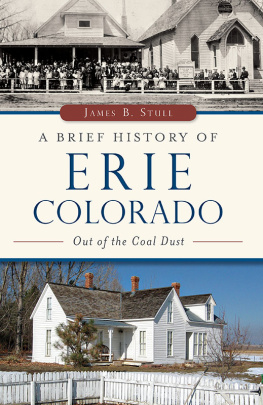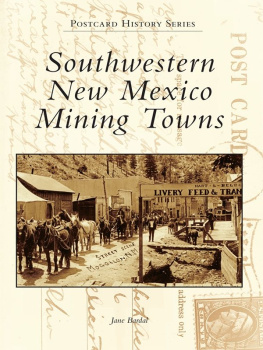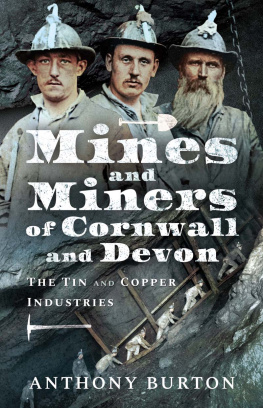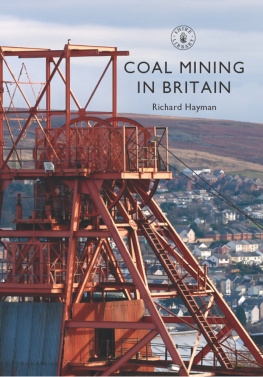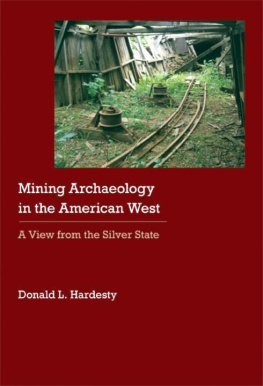George Vrtis and J.R. McNeill
Robert N. Chester III
Thomas G. Andrews
Jeffrey T. Manuel
Steven M. Hoffman
Andrew C. Isenberg
Acknowledgments
The idea for this book emerged during a workshop titled History Underground: Environmental Perspectives on Mining, held at the Rachel Carson Center for Environment and Society in Munich, Germany, during the summer of 2011. The goal of that workshop was to take stock of the global environmental history of mining, and so for three days participants presented papers that took us to four continents and deep into the past. Five of the essays in this volume were first presented at that workshop, and so we wish to thank the Rachel Carson Center and its directors, Christof Mauch and Helmuth Tricschler, for their generous support of the workshop, as well as Frank Uektter, Donald Worster, and Bernd Grewe, all of whom served as session chairs and contributed valuable insights throughout the workshop.
We are also grateful to several other organizations for supporting this book. Our home institutionsGeorgetown University and Carleton Collegecontributed funds for maps and the index and provided congenial homes in which to work. The University of California Press offered enthusiasm for the book that never wavered, despite its gestation taking longer than any of us wished. We are especially grateful to Niels Hooper, our editor at the press, for his encouragement and patience. Thanks also to Bradley Depew, who guided the book through all phases of assembling the manuscript, reviewing the artwork, designing the cover, and moving the book into production. In addition, we wish to express our gratitude to Steven Baker, who did a superb job copyediting the book and enhancing the clarity of our prose.
We also wish to thank our authors for joining this effort to unearth the environmental history of mining in North America. Each has made a unique contribution to this book, and the volume would be the weaker without any one of them. We particularly wish to single out Steven Hoffman, our wonderful and perceptive colleague from the University of St. Thomas in St. Paul, Minnesota, who contributed the essay on the mining of Albertas tar sands. Sadly, Steven passed away in 2015 before the book was completed. We are grateful to his sister Mary Lammert for giving us permission to publish his essay.
Lastly, to our familiesJulie, Will, Patrick, Jesse, and Kat; and Anne, Meadow, and Henryour heartfelt thanks for supporting us during the long journey this book required.
Introduction
Of Mines, Minerals, and North American Environmental History
GEORGE VRTIS AND J.R. MCNEILL
Modern North America is a world built of minerals. Buildings, transportation networks, communication systems, waterworks, machinery, and appliances of every kindall of these depend on minerals clawed from beneath the earths surface. A modern American automobile now contains at least thirty-nine different minerals, everything from aluminum and bauxite to tungsten and zinc. Computers and smartphones can contain even more, including precious metals such as gold, silver, and platinum, as well as rare earth elements such as europium and yttrium that provide color for their liquid-crystal displays.
Modern North America also depends on its vast array of minerals in staggering quantities. Today, a common American automobile contains more than a ton of iron ore hardened into steel, 240 pounds of aluminum, 42 pounds of copper, and 41 pounds of silicon. Comparable figures are likely for the Canadian and Mexican experiences.
These are dizzying figures, but together they begin to illustrate the importance of mineralsand thus mining in forging modern life in North America. Although indigenous peoples have dug into the earth for useful and treasured materials across the continent for thousands of years, the advent of the industrial age marked a new relationship among North American societies, minerals, and mines that eventually remade those societies and the natural world in fundamental ways. As minerals moved from the periphery to the core of economic production, they reordered whole economies, reshaped deep-seated cultural and social patterns, redirected scientific and technological initiatives, redistributed military and economic might, refocused political power and international relations, and recast the health and fortunes of local communities and entire regions. These same dynamics also reverberated through the environment, influencing North American ecological communities and physical processes on a scale that rivaled anything in the continents thirteen or fourteen millennia of human experience. From Canada to Mexico, mining has honeycombed vast portions of the continent, leveled old mountains and created new ones, fashioned massive open-pit wastelands and buried entire valleys in waste rock. It has also denuded forests, accelerated soil erosion, imperiled wildlife populations, polluted water and air with all sorts of chemical wastes, and created some of North Americas most troubling and enduring environmental problems. Indeed, as even a cursory examination of the U.S. Environmental Protection Agencys Superfund National Priorities List reveals, mining sites litter the listing, and the two sites with the highest hazard ranking scores are both tied to mining.




